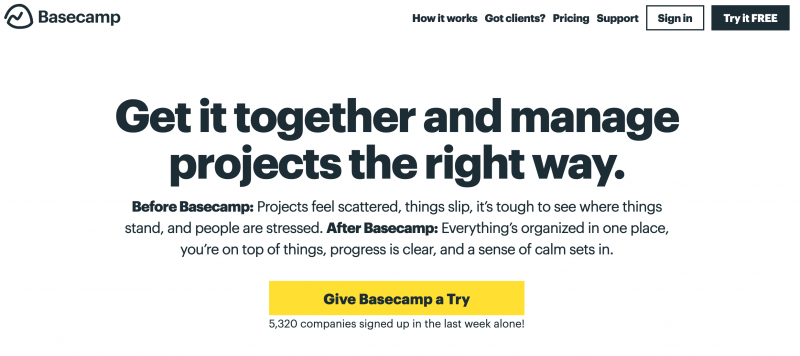Even if you are able to do great search engine optimization for your site, surely you are aware that the most important thing is making conversions that will put cash in your bank account. Otherwise, you won’t have the time or the capital to run your business, and eventually, it will dry up. However, there is a lot of confusion about what the most important factor is in making conversions online. Some say that it is the strength of your offer, others claim that your sales copy is the factor that makes or breaks you and others claim that it’s all about having a specifically targeted audience. The following information will help you to understand the role that each of these plays and how you can use them to boost your online conversions…
The Three Legs of Marketing

To build a solid marketing plan, you have to have an equal balance between the three fundamental “legs” of marketing:
- Audience
- Offer
- Sales Copy
These three must be working together in harmony if you want to have success in making conversions online.
Your Audience
Of the three fundamentals of marketing, the audience is the most important. You can have a terrific offer and the best sales copy and if you don’t get it in front of the right people, they aren’t even going to pay attention to it. The secret to getting your offer in front of the right people online is relevancy and specificity. Here are a few ways to make sure that your target audience meets these two requirements:
1. If everyone is your customer, no one is your customer
The internet marketplace is so competitive that you have to be as specific as possible if you want to win. If you are too general in the selection of your audience, you’ll always be up against an army of competitors who are more specialized than you are. Be as specific as you can in regard to the age, sex, social class, and income level of your target market and you’ll have a lot more success in connecting with them and making sales.
2. Fulfill a Need, Don’t Try to Create One
Do not be afraid of competition when it comes to choosing your target market. If there is no competition, chances are that there is no need for the product or service. This leaves you with the impossible battle of trying to create a need instead of simply fulfilling one. However, competition means that there are already people in your target market buying products like yours, and that’s a good thing. This means you no longer have to sell them on your product or service because they are already buying from someone else. That’s where the strength of your offer comes in…
Your Offer
Your offer is the second most important leg of your marketing strategy. If you have a great offer and get it in front of the right audience, you can get away with having only mediocre sales copy. However, many marketers confuse the offer with the product itself. The offer is what provides the incentive for the person to BUY the product and find out just how good it is. Without a great offer, even the best product will never get a chance to prove its worth.
There are four components to creating a great offer:
- A Guarantee
People are a lot less likely to take a chance on purchasing a product that they have never tried if the sale is final. Adding a guarantee assures the customer that they have a way out if they are unhappy with your product, which makes them more likely to buy.
- Urgency
No great offer is complete without added urgency. In other words, limited-time discounts limited supplies of the product, or added bonuses for buying right now. People procrastinate, they always have and they always will. If you want people to buy from you, then you have to give them a reason to do it right now.
- Added Value
Free bonuses add value to your offer and create the impression that people are getting more than their money’s worth. When it comes to free bonuses, it’s hard to have too many and giving away the additional products will always bring you enough conversions to make it worthwhile.
Your Sales Copy

While your sales copy is the least important leg of your marketing strategy, it is certainly not something you want to take for granted. The difference between a great sales copy and an average sales copy can have zeros at the end. There are four basic components that your sales copy must have:
- Connection to the Audience
You must know who you are talking to and speak their language in regard to what their hopes and fears are. This will build reports and credibility and demonstrate to people that you understand them well enough to help them.
- Emotion
With the exception of products that fulfill basic physical needs, people make buying decisions based on their emotions. Sales copy which engages people’s emotions is sales copy that will get people to buy from you.
- Clarity
You might be able to get away with offending people with your marketing, but you will never be able to get away with confusing them. Sales copy that is not clear in getting the point across is going to confuse people, and consumers won’t waste time trying to understand you.
- Strong Call to Action
If people don’t buy while they are reading your sales page, chances are that they never will. This means that no matter how good your sales copy is, the call to action will make you break your conversion rate. A good call to action needs to do three things: tell the customer what to do next, remind them why they are doing it (the benefit of your product) and tell them what is going to happen once they do it.
Conclusion
Build your marketing strategy around these three principles and work consistently towards understanding your audience, adding value to your refining your sales copy. With a little hard work and perseverance, you’ll be sure to succeed.
Additional Resources for Refining Your Marketing Strategy
http://www.warriorforum.com/forum
A community of internet marketers who discuss methods of marketing, testing, and search engine optimization.
http://www.conversationmarketing.com
A website with strategies about improving conversion rates and positive customer behaviors
https://smallbusiness.chron.com/use-google-website-optimizer-49929.html
Information on how to use the Google Website optimizer
